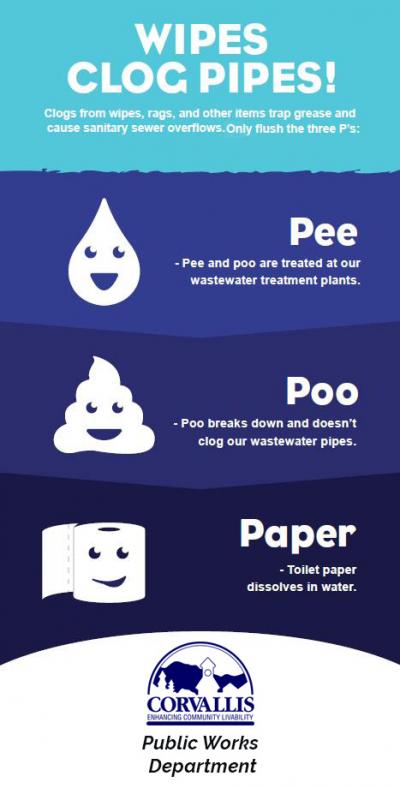Wastewater Utility
The Wastewater Utility is comprised of three systems:
- The Wastewater Collection System collects the all the sanitary wastewater from residential, commercial, and industrial drains and transports it to the Wastewater Treatment Plant.
- The Wastewater Treatment Plant is where the sanitary wastewater is processed before being discharged into the Willamette River.
- The Storm Water Collection System collects rainwater through catch basins in the streets and the many urban creeks in Corvallis and transports it directly to the Willamette River, without being processed at the Wastewater Treatment Plant.
Combined Sewer System and CSO Remediation
In some of the older sections of Corvallis, sanitary wastewater and storm water are collected in the same pipe. During wet weather, these combined flows exceed pipeline and wastewater treatment plant capacity. This resulted in the overflow of a mixture of untreated wastewater and storm water (called "combined sewer overflows" or "CSOs") into the Willamette River. The CSO Remediation Project was substantially completed in 2001 and allows CSOs to be captured and stored in lagoons until they can be processed after the peak flows have passed through the wastewater treatment plant.
Wastewater Quality Monitoring
The City conducts over 10,000 tests on water samples every year to ensure a high quality product and compliance with all State and Federal regulations. Most tests are performed on-site at the Water Quality Lab; others are contracted out to certified testing laboratories. Corvallis wastewater consistently meets or exceeds all regulations for effluent quality. In fact, the quality of the treated water that the City returns to the Willamette River is oftentimes cleaner than the river itself!
If you have questions about drinking water or the wastewater systems effluent water quality, or would like a copy of the City's annual drinking water quality report, call 541-766-6916. The Public Works Department urges all customers to use water wisely to help assure an adequate supply of clean water for the future.
